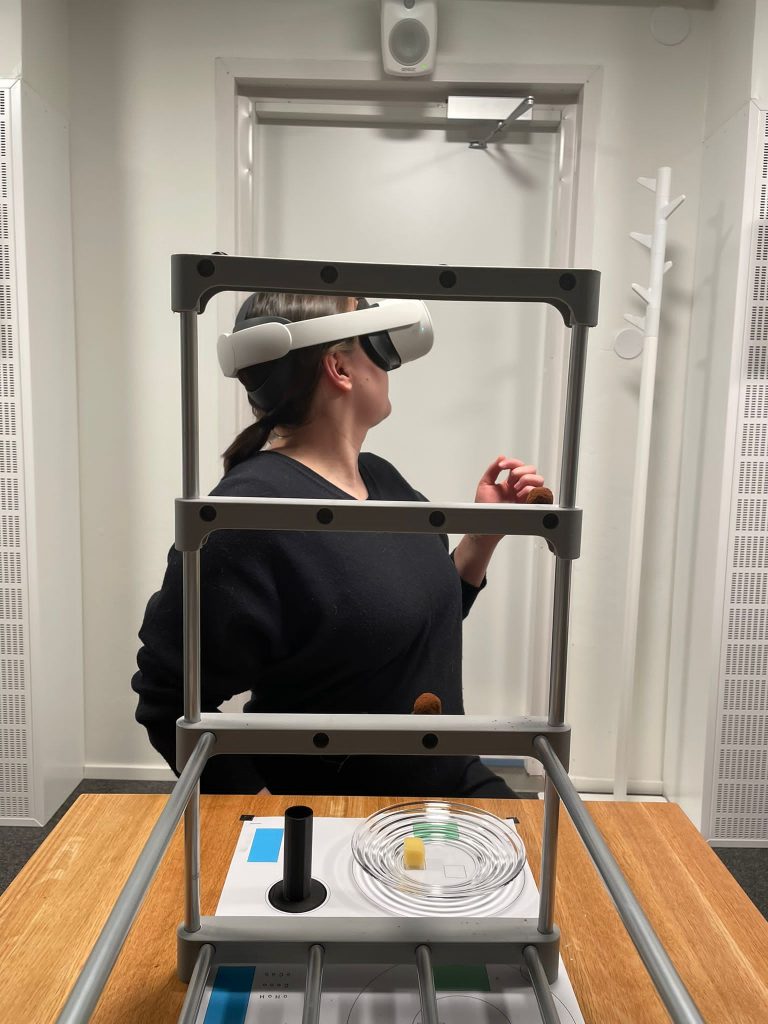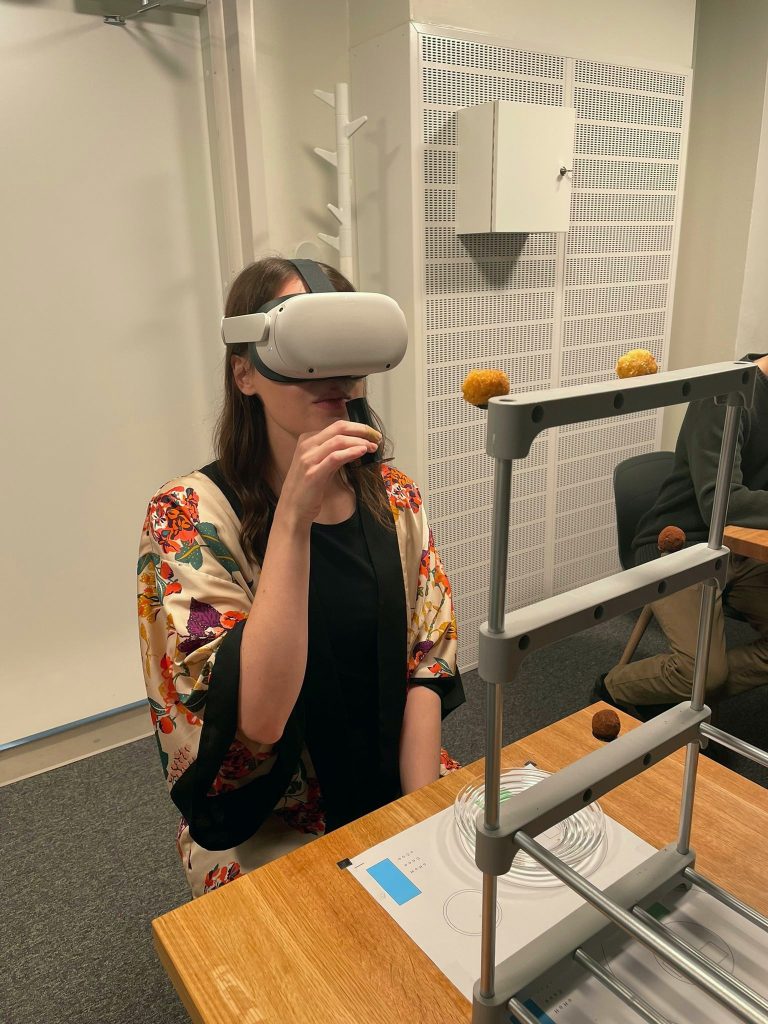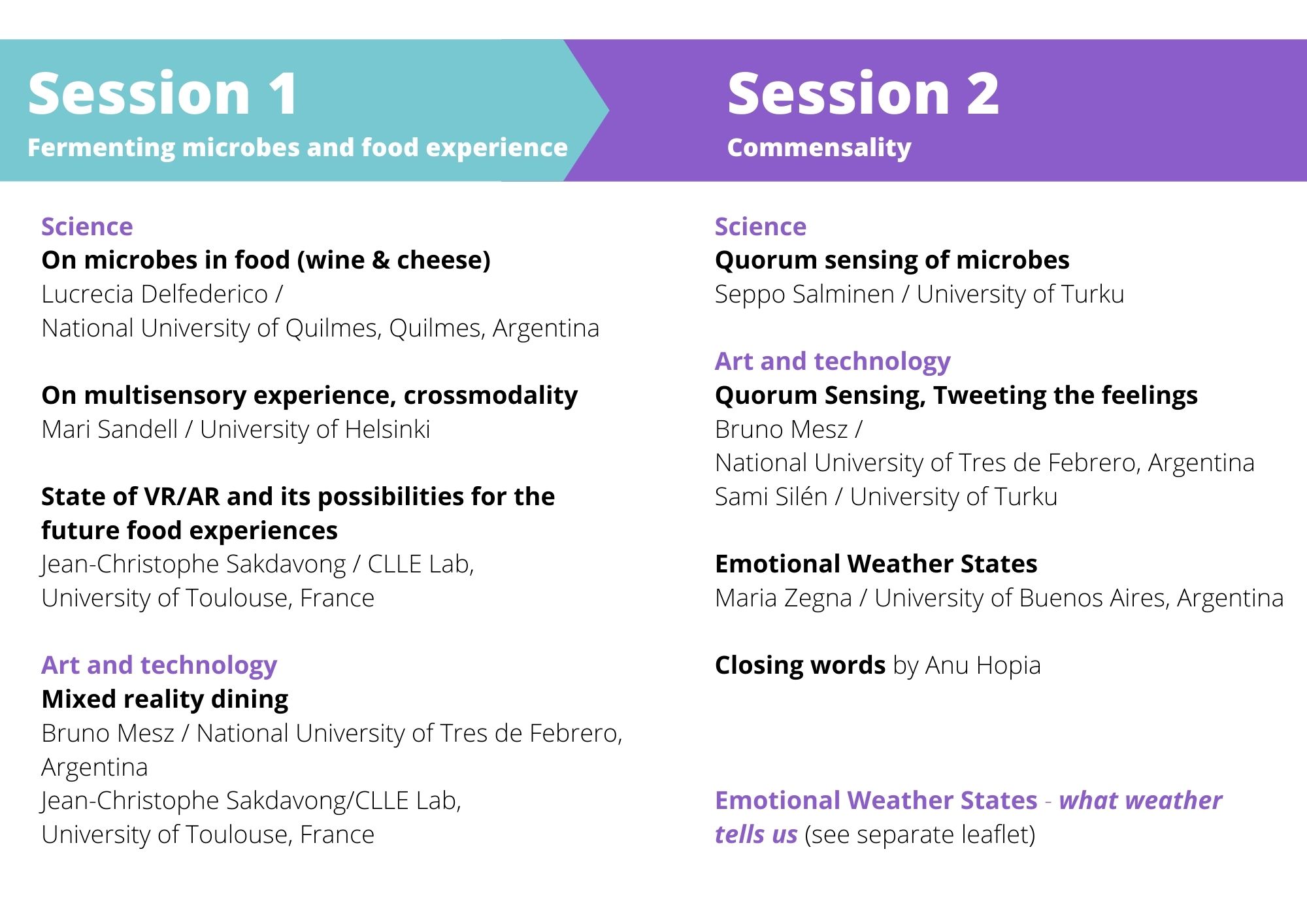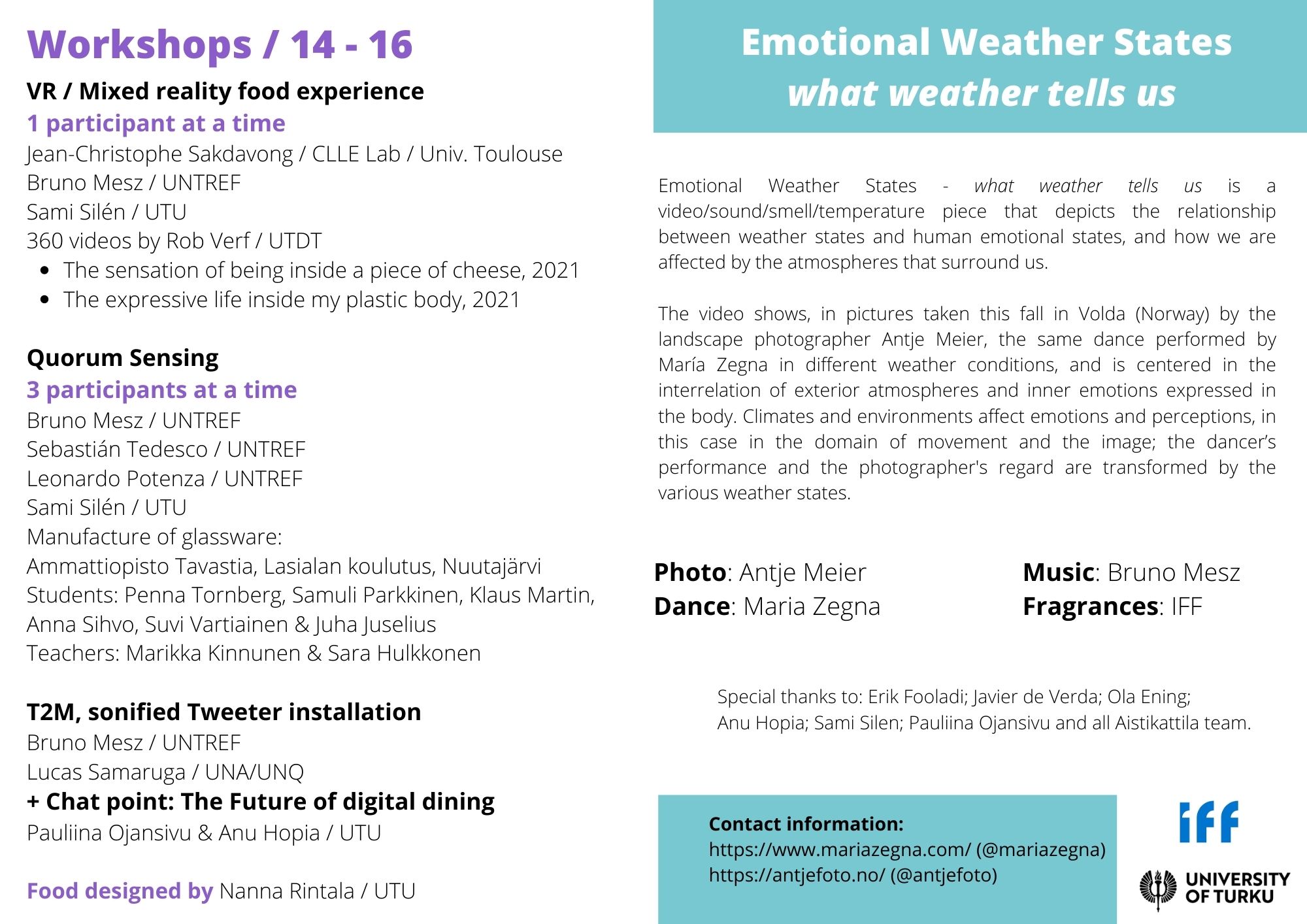This autumn, the event series Do science, art and technology spice up future food experiences brought together an international group of scientists and artists to discuss the future visions of food experience and dining. During the autumn of 2021, the group has worked together, focusing on the relationships between communality, technology, art and dining. The results so far were displayed in Aistikattila on December 10 in an event that combined a hybrid-seminar and live demonstrations.
According to Anu Hopia, professor of food development at University of Turku, “Technology is an increasingly diverse part of our lives, and the dining experience is no exception. However, the essence of eating remains unchanged: when we eat, we share a common experience and are together present in a unique moment. The moment of dining is the core element of our community, and this is also the case in the technological world.”
Seminar: From Neolithic times to the present and future of dining
The seminar was divided into two sessions, both featuring presentations on science as well as art and technology. The first session, From Neolithic times to virtual and mixed reality dining, was opened by Lucrecia Delfederico (National University of Quilmes, Argentina) with her presentation On microbes in food. Lucrecia discussed the history of fermentation and the role of microbes in making wine and cheese. Mari Sandell (University of Helsinki) talked about Multisensory experience and crossmodality. According to Sandell, we are typically using multiple senses while eating and the perceptions we make vary according to the individual – the final experience is a complex sum generated by our senses.
Jean-Christophe Sakdavong (CLLE Lab, University of Toulouse, France) continued on the area of food experiences, speaking on the State of VR/AR and its possibilities for the future food experiences. According to Sakdavong, VR/AR technologies could be utilized for instance to improve food enjoyment by changing the environment in which we are dining, or to help people have better diets by altering our perceptions of the foods we eat. Sakdavong also paired with Bruno Mesz (National University of Tres de Febrero, Argentina) to discuss Mixed reality dining, presenting recent studies that have looked at the ways in which for instance sounds or VR environments affect the way we taste.
The second session covered Commensality. Seppo Salminen (University of Turku) talked about Quorum sensing of microbes and explained how “bacteria talk” – and the ways in which this could be utilized in food production. Bruno Mesz and Sami Silén (University of Turku) had also taken inspiration from the idea of quorum sensing and in their presentations, discussed how this idea can be metaphorized with the human sense of touch. Mesz also explained the concept of Tweeting the feelings, which you can read more about below.
The second sessions was brought to a close with Maria Zegna’s (University of Buenos Aires, Argentina) presentation of her project Emotional Weather States, followed by the screening of her video under the same title.
As a whole, the seminar was a journey from the Neolithic times and the history of food production, through the individual ways of sensing and perceiving things around us to the present and future of digital dining. The presentations covered topics from using technology and science as a way to interact with each other to modifying human experiences. According to the organizers, “The event was rewarding and, in addition to the intriguing presentations, we finally got to test the results of our development projects in practice. The feedback from the participants was positive and we got valuable information to build on in the future.”
The event was rewarding and, in addition to the intriguing presentations, we finally got to test the results of our development projects in practice. The feedback from the participants was positive and we got valuable information to build on in the future.
You can watch the recording of the webinar by clicking here.
Demonstrations: Multisensory buffet with virtual and digital spices
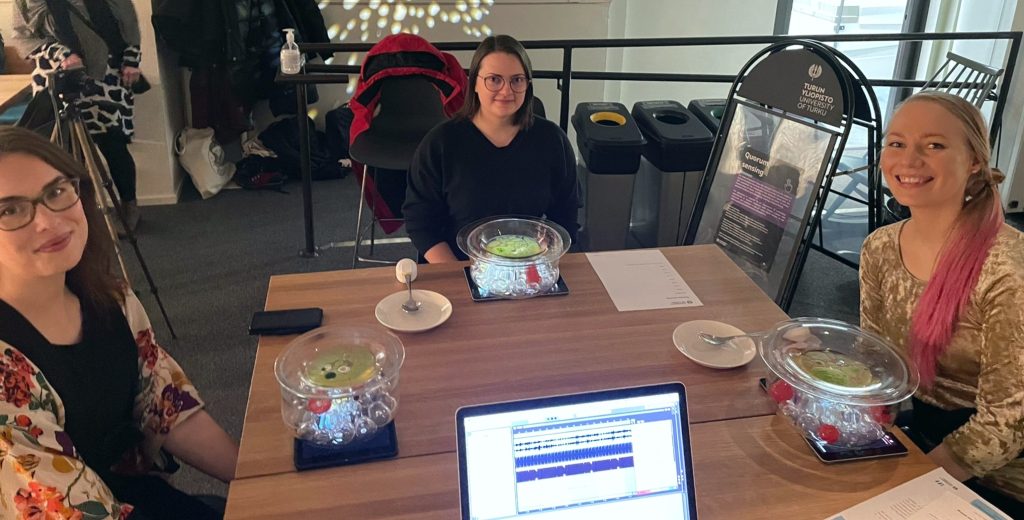
The second part of the afternoon consisted of workshops and demonstrations of the results the teams have come up with so far.
In these, the participants on-site had the chance to test the technologies themselves. Through the different sections, participants were able to see how technology can spice up future food experiences and also bring us together.

The demonstration included two different VR environments, in which the participants got to immerse in while eating foods consistent with the virtual surroundings – hence combining reality and virtuality.
This also enabled collecting feedback from participants who had not tried the technology before.
The environments were titled The sensation of being inside a piece of cheese and The expressive life inside my plastic body, and were both designed by Rob Verf (Universidad Torcuato Di Tella).

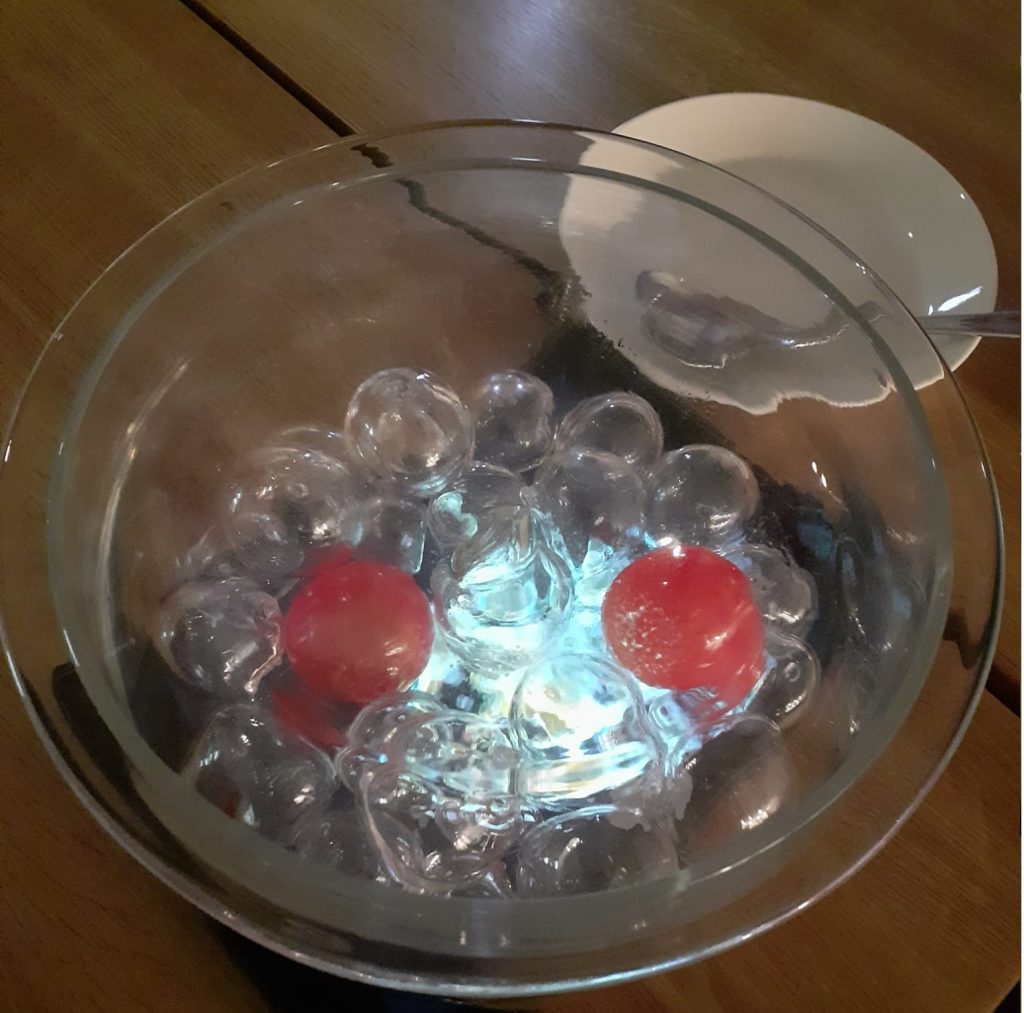
The demonstration metaphorized bacteria’s ability to detect the presence of others with the human sense of touch, increasing the sense of remote presence of diners as well as collectively creating a shared feeling – which is often something we miss in our modern everyday life.
In practice, this was achieved with vibrating belts, which reacted to the movements the diner next to you made with their spoon. At the table, glassware was also combined with a tablet presenting shapes and colors to create a multisensory atmosphere.

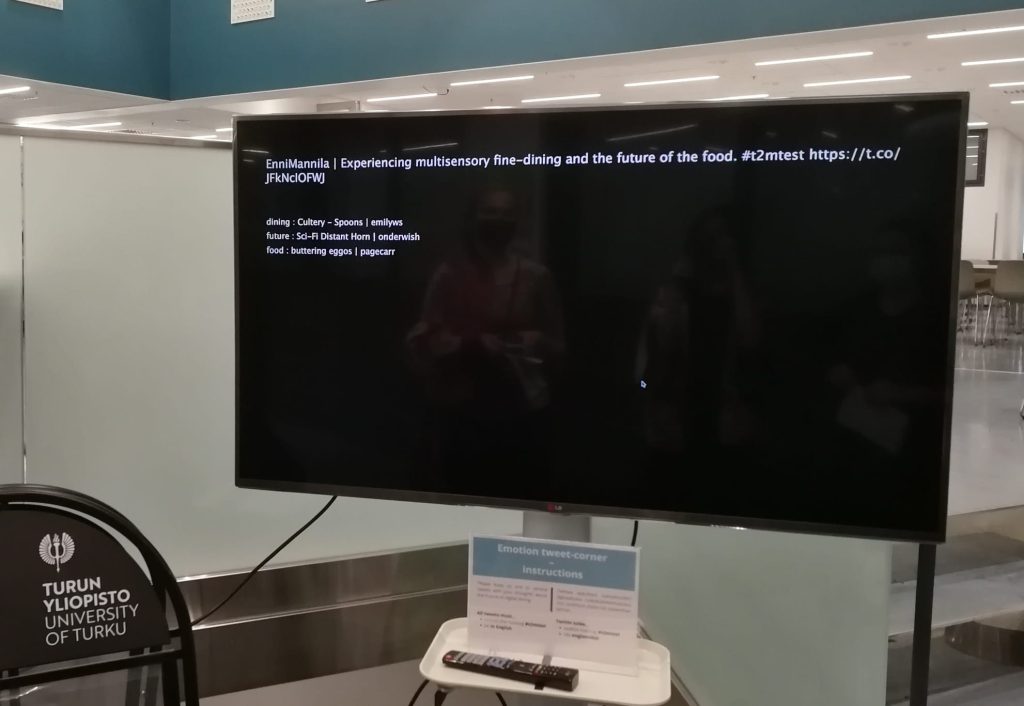
In the Emotion Tweet-Corner, participants got to share their thoughts about the future of digital dining – T2M then took words from the tweets and composed music using Freesound-files labeled with those words as raw material.
The installation drew on musical semantics, generating a collectively created soundscape. In the attached image a participant tweeted “Experiencing multisensory fine-dining and the future of food”, which then turned into music combining elements of cutlery, distants horns and buttering.
